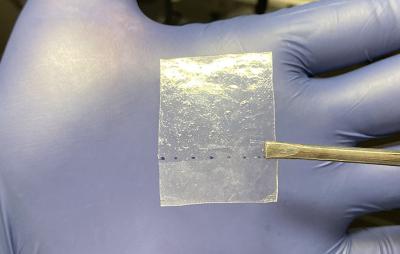Researchers show that perovskite-based thermochromic windows reduce energy load and carbon emission in buildings
Researchers from NREL, University of Wisconsin—Stout and Swift Solar have reported perovskite-based thermochromic windows that reduce energy load and carbon emission in buildings. The team calculated and fabricated a perovskite-based technology with excellent transition temperatures for building energy savings.
The use of thermochromic windows in office buildings improves energy efficiency across all climate zones in the United States by modulating the temperature inside, leading to a massive savings, according to the research effort led by the U.S. Department of Energy’s National Renewable Energy Laboratory (NREL).






